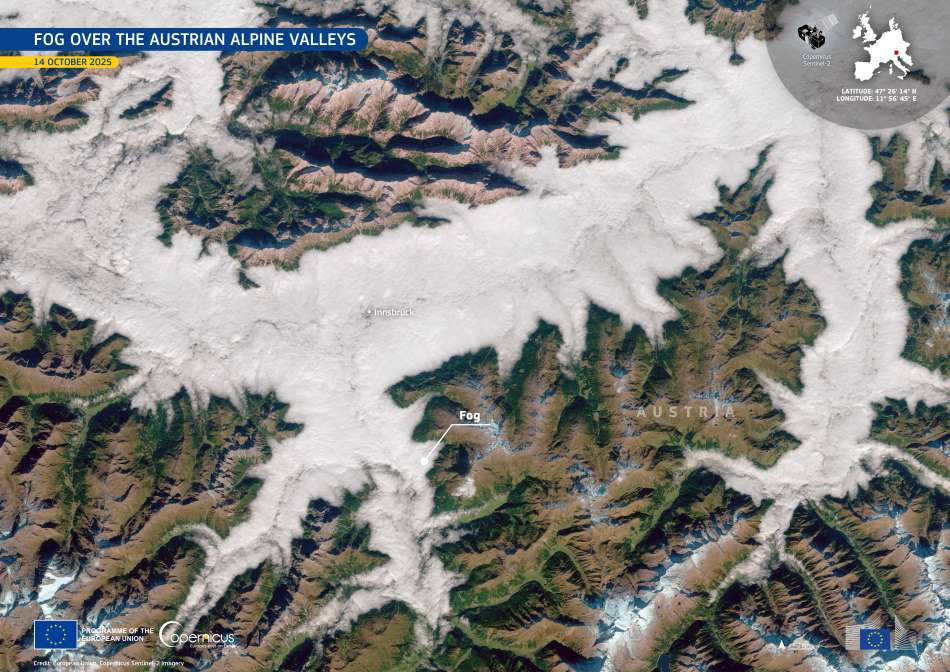Early morning fog curls through the Austrian Alps, filling valleys carved by the Inn, Ziller, Sill, and Ruetz rivers. Captured by the Copernicus Sentinel-2 mission on 14 October 2025, the image reveals how the region’s steep terrain and seasonal temperature shifts shape this striking landscape phenomenon.
In Tyrol, fog and low stratus clouds are a familiar sight in autumn. As the days grow shorter and the sun sits lower in the sky, the ground cools more quickly after sunset. Cold, heavy air settles into the valleys, trapping moisture that condenses near the surface. With temperature inversions forming above, the fog remains confined for hours or even days, blanketing the landscape in a pale, motionless sea.

These quiet, mist-filled mornings are more than just atmospheric – they influence the living fabric of the Alps. Persistent fog regulates temperature and humidity, shaping vegetation patterns and the rhythms of wildlife adapted to alpine conditions. In some valleys, this slow interplay between air, moisture, and light defines entire ecological niches unique to the mountain environment.
Monitoring such patterns from orbit helps scientists better understand how mountain ecosystems respond to shifting climates. The Copernicus program’s open data provide continuous observations of remote terrain, supporting research on snow cover, vegetation, and temperature changes across Europe’s high-altitude regions. Over time, these records reveal how delicate alpine systems evolve under the pressure of a warming planet.
Featured image credit: European Union, Copernicus Sentinel-2 imagery



